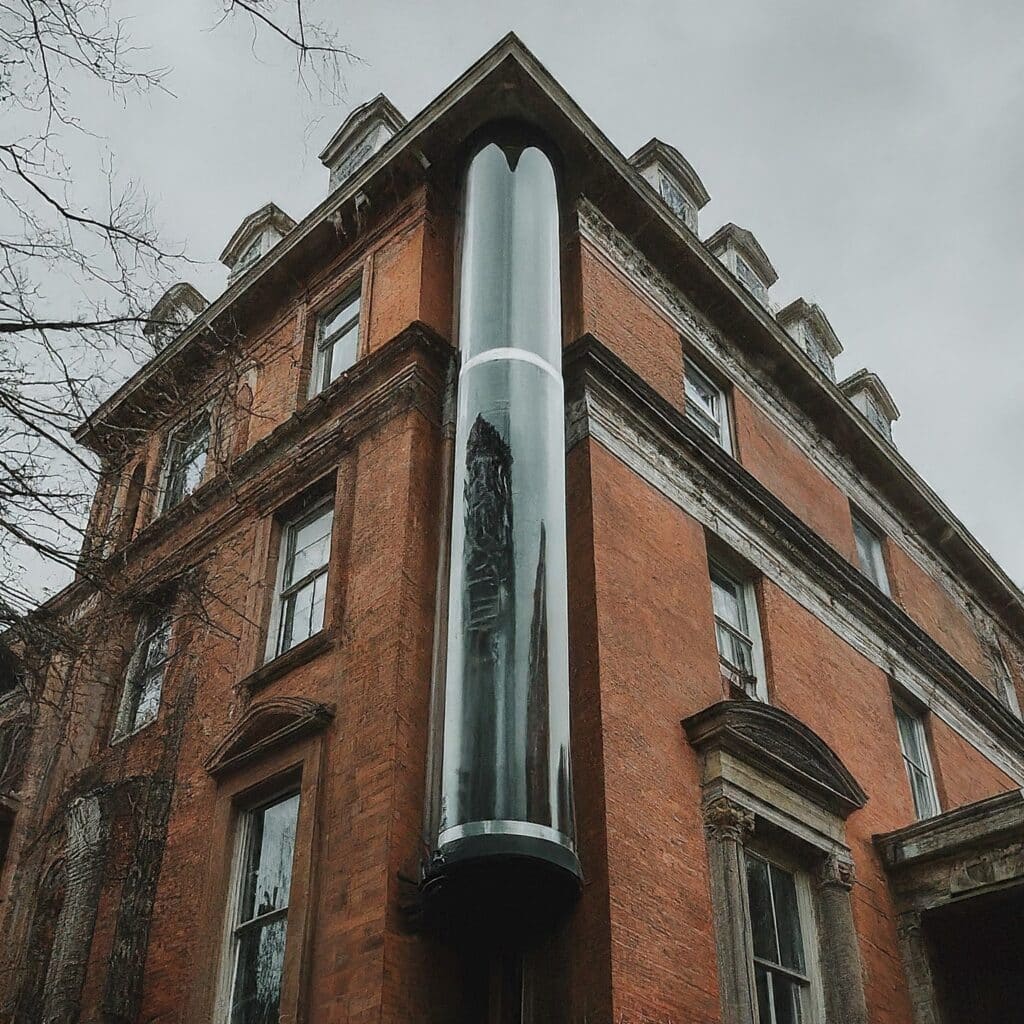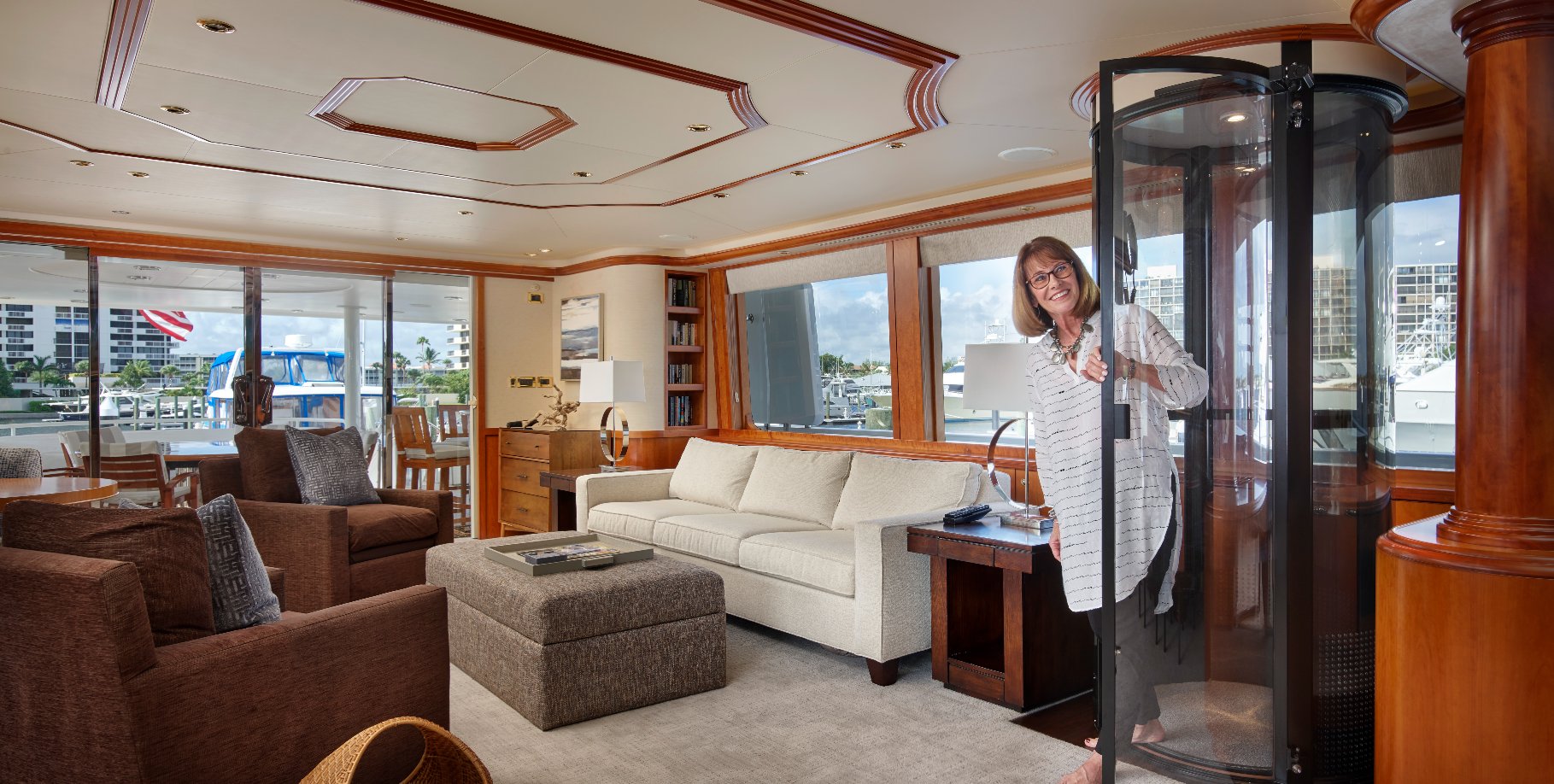Miami’s vibrant lifestyle thrives on accessibility. While its multi-story homes offer stunning views, navigating them can become challenging with age or mobility limitations. Residential lifts (elevators) bridge this gap, transforming your Miami home into an accessible haven. Let’s delve into the technical aspects, installation costs, and local regulations specific to Miami.
Technical Considerations for Residential Lifts in Miami

Types of Lifts:
- Hydraulic Lifts: Popular in Miami for their affordability and versatility. They use a piston and oil system, don’t require a machine room, and can be installed in existing homes with minimal structural changes. Ideal load capacity ranges from 300 to 1000 lbs.
- Pneumatic Vacuum Lifts: These innovative lifts utilize air pressure for a quiet operation. Sleek design and minimal space requirements (around 6ft x 4ft) make them perfect for modern Miami homes. Load capacity typically ranges from 500 to 750 lbs.
- Traction Lifts: Traditional elevators with a hoisting system and counterweights. They offer a smooth ride and are well-suited for multi-story homes with ample space. Load capacity can exceed 1000 lbs.
Miami-Specific Considerations:
- Hurricane Codes: Miami-Dade County enforces stringent building codes for hurricane protection (Florida Building Code, High Velocity Hurricane Zone). Lifts must be designed and installed to withstand these extreme wind loads. Consult with a licensed elevator contractor familiar with Miami-Dade regulations.
- Flood Zones: A significant portion of Miami lies in flood zones. Lifts in these areas need to be installed above the Base Flood Elevation (BFE) as determined by FEMA flood maps.
- Salt Air Corrosion: Miami’s proximity to the ocean necessitates using corrosion-resistant materials for lift components, especially drive systems and electrical components. Consider stainless steel or galvanized steel options.
Cost of Residential Lift Installation in Miami
The cost of installing a residential lift in Miami varies depending on several factors:
- Lift Type: Hydraulic lifts offer the most cost-effective option ($15,000 – $30,000), followed by pneumatic ($25,000 – $40,000) and traction lifts (>$40,000).
- Lift Capacity and Size: Larger lifts with higher weight capacities will incur a higher cost.
- Customization: Finishes, advanced control systems, and additional features like phone integration increase the cost.
- Structural Modifications: Existing homes might require shaft construction (for traction lifts) or pit digging (for hydraulic lifts), adding to the cost.
- Electrical and Plumbing Work: Depending on your existing infrastructure, additional electrical wiring and plumbing adjustments may be necessary.
Additional Costs:
- Permits and Inspections: Obtain necessary permits from the Miami-Dade Building Department and schedule inspections throughout the installation process.
- Annual Maintenance: Budget for annual maintenance to ensure smooth operation and safety.
Financing Options:
Explore home improvement loans or inquire with the installer about financing plans.
Local Regulations and Permits in Miami

Miami-Dade Building Department (MDBD):
- All residential lift installations require permits from the MDBD.
- Ensure your chosen contractor is a licensed Elevator Contractor (EC) registered with the Florida Construction Industry Licensing Board (FBIL).
- Submit detailed lift specifications, including load capacity, travel distance, and floor plans, with your permit application.
- The MDBD will conduct inspections at various stages of the installation process.
Hurricane Codes and Flood Zone Regulations:
- Ensure your lift complies with Miami-Dade County’s hurricane protection codes (Florida Building Code – High Velocity Hurricane Zone).
- Lifts in flood zones must be installed above the BFE as determined by FEMA flood maps.
Additional Considerations:
- Homeowner Associations (HOAs) might have specific regulations regarding lift installations. Obtain written approval from your HOA before proceeding.
Technical Specifications for Lift Installation in Miami
- Shaft Construction (if required): Shafts for traction lifts need to be constructed following Miami-Dade County building codes and hurricane protection standards.
- Pit Depth (Hydraulic Lifts): The pit depth for hydraulic lifts is typically 4-5 feet. Ensure the existing floor can accommodate this depth.
- Headroom: Factor in the required headroom above the top floor for proper lift operation.
- Electrical Requirements: A dedicated electrical circuit with sufficient capacity will be needed to power the lift.
- Doorways: Doorway openings need to be wide enough to accommodate lift access (typically 36 inches minimum).
Safety Features:
Miami-Dade County enforces strict safety regulations for residential lifts. Modern lifts incorporate a multitude of safety features:
- Emergency Stop Button: Stops the lift immediately in case of emergencies.
- Automatic Shutoff: Lifts automatically shut off during power outages, preventing entrapment.
- Door Interlocks: Prevent the lift from operating unless the doors are properly closed and secured.
- Phone or Intercom System: Allows occupants to communicate with someone outside the lift in case of issues.
- Overload Sensors: Prevent the lift from operating when exceeding its weight capacity.
- Buffering at Floor Levels: Ensures a smooth and level stop at each floor.
- Automatic Leveling: Maintains a level platform at each floor for safe entry and exit.
Additional Considerations:
- Backup Battery System: Consider an optional backup battery system to ensure lift operation during power outages.
- Lift Alarms: Explore adding audible and visual alarms to alert occupants in case of malfunctions.
Residential Lifts in Miami: Frequently Asked Questions (FAQs)
Technical FAQs:
- What is the difference between a shaftless and a shaft-based lift?
- Shaftless lifts, like pneumatic vacuum lifts, utilize a self-supporting tube and require minimal structural modifications. They are ideal for existing homes with limited space. Shaft-based lifts, like traction lifts, require a dedicated hoistway for operation and are better suited for multi-story homes with ample space for construction.
- What is the typical travel distance for residential lifts in Miami?
- Residential lifts typically cover travel distances between two to four floors, catering to most multi-story Miami homes.
- What power source do residential lifts use?
- Most residential lifts operate on standard household electricity (120V or 240V). Some larger traction lifts may require a dedicated higher voltage circuit.
- How fast do residential lifts travel?
- Residential lifts prioritize safety over speed. Typical travel speeds range from 30 to 60 feet per minute.
- Do residential lifts require a machine room?
- Hydraulic and pneumatic vacuum lifts typically don’t require a dedicated machine room. Traction lifts, however, might necessitate a separate machine room to house the hoisting machinery.
Miami-Specific FAQs:
- Do I need a permit to install a residential lift in Miami?
- Yes, absolutely. Permits are mandatory from the Miami-Dade Building Department (MDBD). Ensure your chosen installer is a licensed Elevator Contractor (EC). They should have registeration with the Florida Construction Industry Licensing Board (FBIL).
- How do Miami’s hurricane codes affect lift installation?
- Miami-Dade County enforces stringent hurricane protection codes. Lifts must be designed and installed to withstand extreme wind loads. Choose an installer familiar with Miami-Dade regulations (Florida Building Code – High Velocity Hurricane Zone).
- What about flood zones in Miami? How do they impact lift installation?
- In designated flood zones, lifts installation should be above the Base Flood Elevation (BFE) as determined by FEMA flood maps. Consult with your installer regarding flood zone regulations.
- Do homeowner associations (HOAs) have a say in lift installations?
- Some HOAs might have specific regulations regarding lift installations. Obtain written approval from your HOA before proceeding with the installation.
General FAQs:
- How much maintenance do residential lifts require?
- Annual maintenance by a qualified technician is crucial to ensure smooth operation and safety. This typically includes inspections, lubrication, and adjustments.
- What is the lifespan of a residential lift?
- With proper maintenance, residential lifts can last for 20-30 years or even longer.
- Are residential lifts energy-efficient?
- Modern residential lifts are designed with energy efficiency in mind. Hydraulic and pneumatic lifts generally consume less energy compared to traction lifts.
- Can I customize my residential lift?
- Yes, many options exist for customization. You can choose from various finishes, door styles, control panels, and even add phone integration for increased convenience.
- Is it safe to use a residential lift during a power outage?
- Consider installing a backup battery system to ensure lift operation during power outages. This allows safe and continued use of the lift.
By understanding these technical and Miami-specific considerations, you can make an informed decision when selecting and installing a residential lift in your Miami home. Remember, prioritize safety and choose a reputable installer familiar with local regulations and hurricane-prone environments. A residential lift can significantly enhance your Miami living experience, promoting accessibility and independent living for years to come.
For discerning homeowners seeking a sleek, space-saving solution, PVE stands out as a top choice for residential lift installations in Miami, encompassing both North and South Miami.







